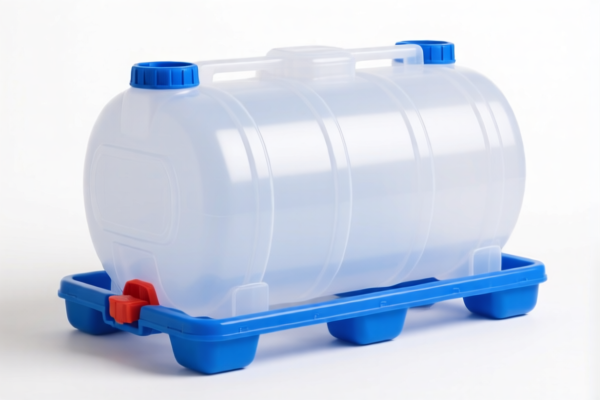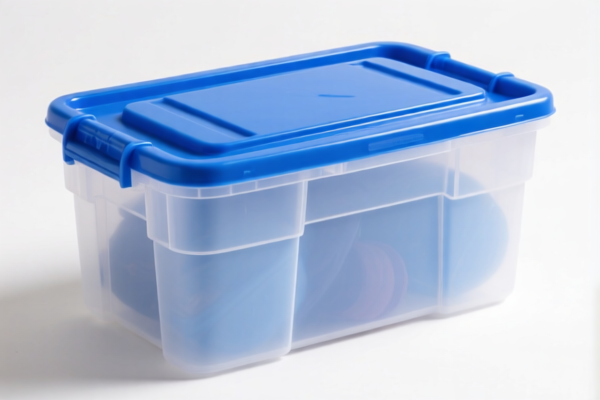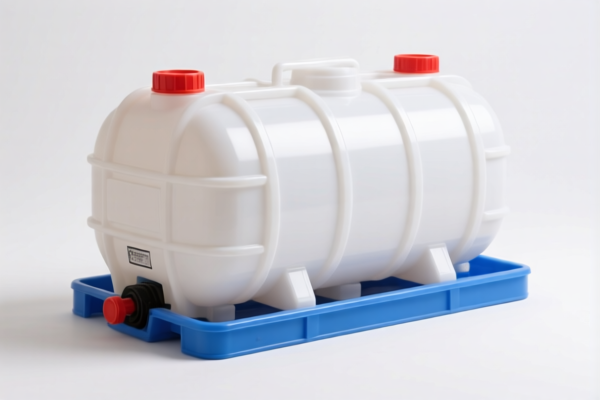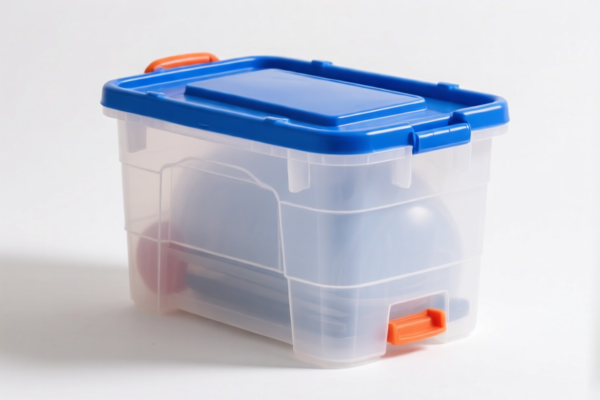| HS Code | Official Doc | Tariff Rate | Origin | Destination | Effective Date |
|---|---|---|---|---|---|
| 8481809015 | Doc | 57.0% | CN | US | 2025-05-12 |
| 8481809050 | Doc | 57.0% | CN | US | 2025-05-12 |
| 7309000030 | Doc | 80.0% | CN | US | 2025-05-12 |
| 7309000090 | Doc | 80.0% | CN | US | 2025-05-12 |
| 7310100005 | Doc | 80.0% | CN | US | 2025-05-12 |
| 7310100015 | Doc | 80.0% | CN | US | 2025-05-12 |
| 7611000030 | Doc | 57.6% | CN | US | 2025-05-12 |
| 7611000090 | Doc | 57.6% | CN | US | 2025-05-12 |
| 7612100000 | Doc | 57.4% | CN | US | 2025-05-12 |
| 7612905000 | Doc | 55.0% | CN | US | 2025-05-12 |
| 3926901600 | Doc | 40.6% | CN | US | 2025-05-12 |
| 3926909989 | Doc | 42.8% | CN | US | 2025-05-12 |
| 3923900080 | Doc | 58.0% | CN | US | 2025-05-12 |




Sealed Tank
A sealed tank is a container designed to prevent the ingress or egress of fluids, gases, or other substances. The primary characteristic of a sealed tank is its ability to maintain a contained environment, differing from open or vented tanks.
Materials
Sealed tanks are constructed from a variety of materials depending on the substance contained, pressure requirements, and environmental conditions. Common materials include:
- Stainless Steel: Offers high corrosion resistance, durability, and strength, suitable for a wide range of applications, including food processing, pharmaceuticals, and chemical storage. Grades 304 and 316 are frequently used.
- Carbon Steel: A cost-effective option for less corrosive substances. Often lined internally with protective coatings (e.g., epoxy, polyurethane) to prevent corrosion.
- Plastic (Polyethylene, Polypropylene, PVC, PTFE): Lightweight and corrosion-resistant, ideal for storing chemicals, water, and other liquids. Suitable for lower-pressure applications.
- Fiberglass Reinforced Plastic (FRP): Offers excellent corrosion resistance and strength-to-weight ratio. Used in applications requiring storage of aggressive chemicals or in harsh environments.
- Aluminum: Lightweight and corrosion-resistant, used in aerospace and specialized applications.
Purpose
The primary purpose of a sealed tank is containment. Specific applications include:
- Storage: Holding liquids, gases, or solids for later use.
- Process Vessels: Facilitating chemical reactions, mixing, or other processes within a controlled environment.
- Pressure Vessels: Containing fluids or gases at pressures significantly different from atmospheric pressure.
- Transportation: Safely transporting hazardous or sensitive materials.
- Waste Containment: Storing and managing waste materials.
Function
The function of a sealed tank relies on several key components:
- Tank Body: Provides the primary containment volume. Design considerations include shape (cylindrical, rectangular, spherical), size, and wall thickness.
- Seals & Gaskets: Prevent leakage at joints, openings, and around components. Materials include elastomers (e.g., Viton, EPDM, silicone), metallic seals, and O-rings.
- Connections (Flanges, Threads): Allow for the introduction and removal of substances, as well as the connection of pipes, valves, and other equipment.
- Valves: Control the flow of substances into and out of the tank.
- Pressure Relief Devices (Safety Valves, Rupture Disks): Protect the tank from overpressure.
- Agitation Systems (Mixers, Impellers): Used in process vessels to ensure uniform mixing of contents.
- Heating/Cooling Jackets: Maintain desired temperature within the tank.
Usage Scenarios
Sealed tanks are employed across a broad spectrum of industries:
- Chemical Processing: Storage and reaction of various chemicals.
- Pharmaceutical Manufacturing: Maintaining sterile environments for drug production.
- Food and Beverage Industry: Storage of liquids, fermentation processes, and ingredient mixing.
- Water Treatment: Storage of water and chemicals used in treatment processes.
- Oil and Gas Industry: Storage of crude oil, refined products, and process fluids.
- Aerospace: Fuel tanks and pressurized systems.
- Wastewater Treatment: Holding and processing of wastewater.
- HVAC Systems: Expansion tanks and refrigerant storage.
Common Types
- Atmospheric Tanks: Designed for operation at or near atmospheric pressure. Typically used for storage of liquids with low vapor pressure.
- Pressurized Tanks: Designed to operate at pressures above atmospheric pressure. Require robust construction and pressure relief devices.
- Cryogenic Tanks: Designed for storage of liquefied gases at extremely low temperatures. Require specialized insulation and materials.
- Double-Wall Tanks: Feature a secondary containment layer for added safety and leak prevention.
- Horizontal Tanks: Often used for large-volume storage.
- Vertical Tanks: Generally more space-efficient.
- Cone Bottom Tanks: Facilitate complete drainage of contents.
- Jacketted Tanks: Equipped with a jacket for heating or cooling.
The declared goods are “sealed tank”. Based on the provided reference material, the following HS codes may be applicable:
-
7309000030: Reservoirs, tanks, vats and similar containers for any material (other than compressed or liquefied gas), of iron or steel, of a capacity exceeding 300 liters, whether or not lined or heat insulated, but not fitted with mechanical or thermal equipment. This HS code covers tanks made of iron or steel with a capacity greater than 300 liters and not equipped with mechanical or thermal equipment.
- 73: Articles of iron or steel.
- 09: Reservoirs, tanks, vats and similar containers.
- 000030: Specifically for iron or steel containers exceeding 300 liters in capacity.
-
7309000090: Reservoirs, tanks, vats and similar containers for any material (other than compressed or liquefied gas), of iron or steel, of a capacity exceeding 300 liters, whether or not lined or heat insulated, but not fitted with mechanical or thermal equipment. This HS code also covers tanks made of iron or steel with a capacity greater than 300 liters, but is a more general classification than 7309000030.
- 73: Articles of iron or steel.
- 09: Reservoirs, tanks, vats and similar containers.
- 000090: A general classification for iron or steel containers exceeding 300 liters in capacity.
-
7611000030: Aluminum reservoirs, tanks, vats and similar containers, for any material (other than compressed or liquefied gas), of a capacity exceeding 300 liters, whether or not lined or heat insulated, but not fitted with mechanical or thermal equipment. This HS code applies to aluminum tanks exceeding 300 liters in capacity and not equipped with mechanical or thermal equipment.
- 76: Aluminum and aluminum articles.
- 11: Reservoirs, tanks, vats and similar containers.
- 000030: Specifically for aluminum containers exceeding 300 liters in capacity.
-
7611000090: Aluminum reservoirs, tanks, vats and similar containers, for any material (other than compressed or liquefied gas), of a capacity exceeding 300 liters, whether or not lined or heat insulated, but not fitted with mechanical or thermal equipment. This HS code also covers aluminum tanks exceeding 300 liters in capacity, but is a more general classification than 7611000030.
- 76: Aluminum and aluminum articles.
- 11: Reservoirs, tanks, vats and similar containers.
- 000090: A general classification for aluminum containers exceeding 300 liters in capacity.
Regarding HS codes 7309000030, 7309000090, 7611000030, and 7611000090, please note that the material (steel or aluminum) and capacity (exceeding 300 liters) are key factors in determining the correct classification. Additionally, these HS codes specifically exclude tanks fitted with mechanical or thermal equipment.
For HS codes 7309000030 and 7309000090, a 25.0%加征关税 applies, increasing to 30.0% after 2025.4.2. The total tax rate is 80.0%. For HS codes 7611000030 and 7611000090, a 2.6%基础关税 and 25.0%加征关税 apply, increasing to 30.0% after 2025.4.2. The total tax rate is 57.6%.
Customer Reviews
No reviews yet.